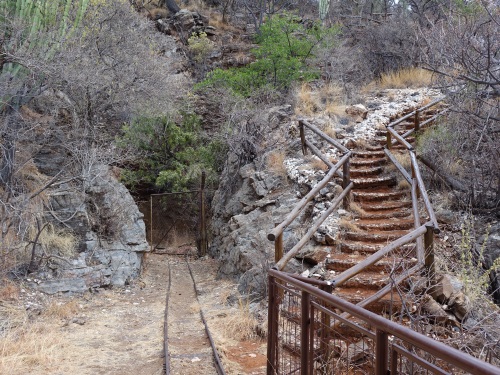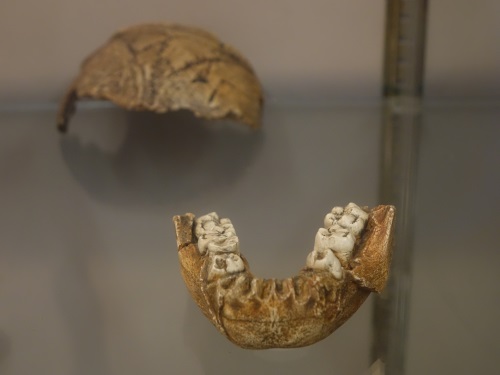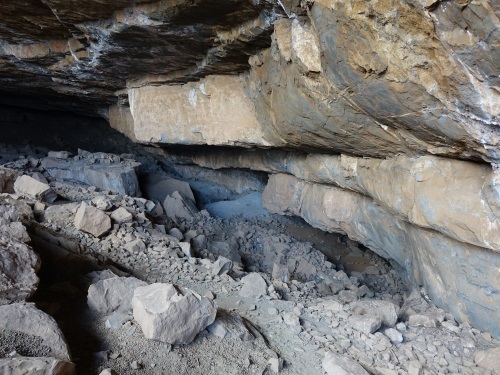Blog WHS Visits
WHS #615: Makapan Fossil Hominid Site
My two-week journey around eastern South Africa is going to be one of obscure sites. This is partly inevitable, due to remoteness or lack of tourism features of WHS like Mapungubwe and Vredefort Dome. But my first site of this trip is an obscure one by choice: for ticking off the Fossil Hominid Sites of South Africa, there is the easy option of the Sterkfontein Caves (close to Johannesburg). From what I gathered it’s a bit of a zoo, so I opted for one of the other inscribed sets of fossil hominid caves. Fortunately there’s one about half way on the road north between Johannesburg and Mapungubwe: the Makapan Valley.
 The Makapan Valley was added as an extension to the Sterkfontein area in 2005. It is said to enrich the original nomination, with its long unbroken record of occupation (spanning almost the entire 3.5 million years) and the recovery of fossil fauna alongside. The location (notably the Cave of Hearths) was deemed “as good” in its own right as the Ethiopian Valleys of the Omo and the Awash. The hominid fossils found here are of the Australopithecus africanus and Homo heidelbergensis species.
Gaining entrance to the site proved not to be easy, especially while organizing it from abroad. I learned that the area can currently only be visited on appointment. The e-mail adresses that I found online turned out to be invalid however. So I decided to just show up at the associated Arend Dieperink Museum in nearby Mokopane. The museum is a charming ramshackle private collection with bits and pieces of local history. There’s one exhibition room devoted to findings from the Makapan Valley. It may not look much from the outside, but I was delighted to come eye-to-eye with several skull fragments of specimens of the Australopithecus africanus. They really had much smaller heads than modern humans.
The Makapan Valley was added as an extension to the Sterkfontein area in 2005. It is said to enrich the original nomination, with its long unbroken record of occupation (spanning almost the entire 3.5 million years) and the recovery of fossil fauna alongside. The location (notably the Cave of Hearths) was deemed “as good” in its own right as the Ethiopian Valleys of the Omo and the Awash. The hominid fossils found here are of the Australopithecus africanus and Homo heidelbergensis species.
Gaining entrance to the site proved not to be easy, especially while organizing it from abroad. I learned that the area can currently only be visited on appointment. The e-mail adresses that I found online turned out to be invalid however. So I decided to just show up at the associated Arend Dieperink Museum in nearby Mokopane. The museum is a charming ramshackle private collection with bits and pieces of local history. There’s one exhibition room devoted to findings from the Makapan Valley. It may not look much from the outside, but I was delighted to come eye-to-eye with several skull fragments of specimens of the Australopithecus africanus. They really had much smaller heads than modern humans.
 Upon leaving the museum, I asked the lady in charge how to go about a visit to the Makapan’s Caves. “You can go there now – it’s always open”, she replied. So no appointment then? I was a bit sceptical, but decided to drive there anyway. The caves lie north of Mokopane, at a signposted turnoff from the ‘old’ road to Polokwane. The last couple of kilometers to the site itself are on an unpaved road. It was just doable with my standard rental car. I had no idea where I would end up, but after passing a hamlet called Makapan Valley I found myself right in front of a gate of National Park proportions. A female guardian came up and after telling that I’d like to see the caves, she directed me inside and said that a guide would be available for me there.
I arrived at what is now ‘the office’ of Makapan Valley World Heritage Site. The guide on duty asked “Have you paid for the tour already?”. Apparently one has to pay at an office on the outskirts of Mokopane (at the Mokopane Center across the street from the Park Hotel?) – which of course I didn’t know about. But he took pity on me, and got into the car with me to the caves that lie still much further into the countryside.
Three caves are open to visitors. The first one has limestone deposits, that’s where the hominid fossils were found. When we arrived at its gate though, it turned out that my guide had forgotten to bring the right keys. Not wanting to drive all the way back on the bad road, we just went on to the other two caves which lie next to each other. These particular caves were used for mining, and railway tracks are still visible. First we saw the Cave of Hearths, renowned for the first hominid-controlled fire and many stone age findings. The top layer of the cave has almost collapsed. And along the same trail lies the ‘Historic’ Cave – the site of a siege between the local Kekana Chief Makapan, who with his clan members sought refuge in these caves, and the advancing Voortrekkers in 1854.
Upon leaving the museum, I asked the lady in charge how to go about a visit to the Makapan’s Caves. “You can go there now – it’s always open”, she replied. So no appointment then? I was a bit sceptical, but decided to drive there anyway. The caves lie north of Mokopane, at a signposted turnoff from the ‘old’ road to Polokwane. The last couple of kilometers to the site itself are on an unpaved road. It was just doable with my standard rental car. I had no idea where I would end up, but after passing a hamlet called Makapan Valley I found myself right in front of a gate of National Park proportions. A female guardian came up and after telling that I’d like to see the caves, she directed me inside and said that a guide would be available for me there.
I arrived at what is now ‘the office’ of Makapan Valley World Heritage Site. The guide on duty asked “Have you paid for the tour already?”. Apparently one has to pay at an office on the outskirts of Mokopane (at the Mokopane Center across the street from the Park Hotel?) – which of course I didn’t know about. But he took pity on me, and got into the car with me to the caves that lie still much further into the countryside.
Three caves are open to visitors. The first one has limestone deposits, that’s where the hominid fossils were found. When we arrived at its gate though, it turned out that my guide had forgotten to bring the right keys. Not wanting to drive all the way back on the bad road, we just went on to the other two caves which lie next to each other. These particular caves were used for mining, and railway tracks are still visible. First we saw the Cave of Hearths, renowned for the first hominid-controlled fire and many stone age findings. The top layer of the cave has almost collapsed. And along the same trail lies the ‘Historic’ Cave – the site of a siege between the local Kekana Chief Makapan, who with his clan members sought refuge in these caves, and the advancing Voortrekkers in 1854.
 A “world-class” Visitor Centre with auditorium was planned for Makapansgat in 2005, paid for by lottery money. It never materialized. Of course the stories and findings are much more exciting than the actual caves. A remarkable object found here is the Makapansgat Pebble: a 3 million years old pebble shaped like a human face. It’s a ‘manuport’, probably the oldest ever found: a natural object removed from its original setting by humans (or hominids), who did not alter it but took it back to the cave because they may have recognized its symbolic or aesthetic value.
A “world-class” Visitor Centre with auditorium was planned for Makapansgat in 2005, paid for by lottery money. It never materialized. Of course the stories and findings are much more exciting than the actual caves. A remarkable object found here is the Makapansgat Pebble: a 3 million years old pebble shaped like a human face. It’s a ‘manuport’, probably the oldest ever found: a natural object removed from its original setting by humans (or hominids), who did not alter it but took it back to the cave because they may have recognized its symbolic or aesthetic value.
An almost hidden entrance
Skull fragments of a Australopithecus africanus
Cave of Gwaša, or the Historic Cave
Els - 3 October 2016